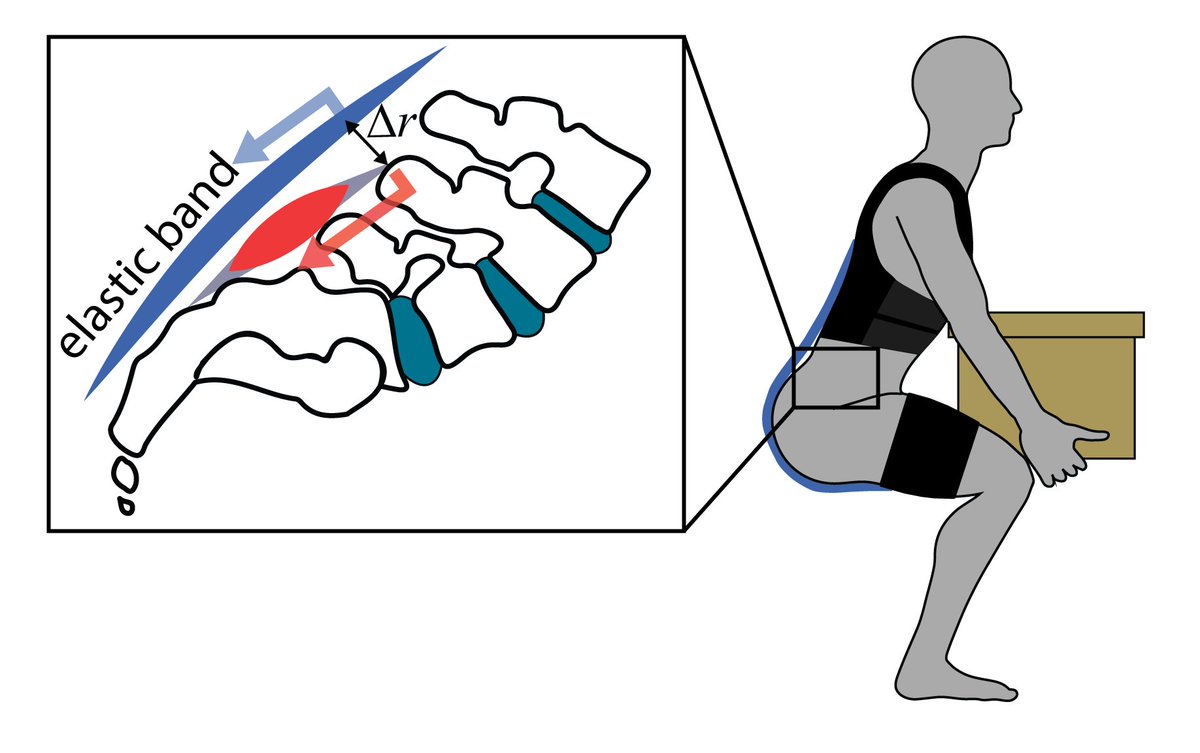Discover and read the best of Twitter Threads about #Ergonomics
Most recents (4)
Occupational #wearables for monitoring low back load have potential to improve ergonomic assessments & enable personalized, continuous monitoring of overexertion injury risk in the workplace.
#biomechanics #ergonomics
Encouraged by what we discovered:
mdpi.com/1424-8220/21/2…
1/
#biomechanics #ergonomics
Encouraged by what we discovered:
mdpi.com/1424-8220/21/2…
1/
We wanted to know: if we can only use a small number of wearable sensors to monitor low back loading, then which sensors should we use, where should we place them, what type of algorithm should we employ, & how accurately can we monitor back loading during material handling?
2/
2/

To address this we synchronously collected data from the #biomechanics lab & from #wearables to analyze 10 individuals each performing 400 different material handling tasks. We explored dozens of candidate solutions that used IMUs on various body locations & pressure insoles.
3/
3/
Excited to share our new #biomechanics publication on the effect of low-profile elastic #exosuits on back muscle fatigue. #exoskeleton #exosuit
nature.com/articles/s4159…
Challenging experiment, but we learned a lot in the process. Here are the top 4 lessons I took away....
1/
nature.com/articles/s4159…
Challenging experiment, but we learned a lot in the process. Here are the top 4 lessons I took away....
1/

First, huge kudos to lead author @lamers_erik who completed his PhD last month!
During his time @CREATEatVandy he completed a series of studies on quasi-passive wearable assistive devices spanning from foot prostheses to back-assist exosuits
Super proud of the work he did!
2/
During his time @CREATEatVandy he completed a series of studies on quasi-passive wearable assistive devices spanning from foot prostheses to back-assist exosuits
Super proud of the work he did!
2/
Next some background: When I talk to scientists they often want to know how much exosuits reduce muscle activity, or joint torque, or metabolic rate, or about the optimal assistance levels, specific design features, etc.
And I love this technical aspect of research, but...
3/
And I love this technical aspect of research, but...
3/
Thanks for all the great @BiomechanicsDay posts, videos & memories shared this week! Refreshing, energizing & inspiring! @CREATEatVandy & I posted on a few social media sites. Compiling here into #NBD2020 ode to #biomechanics! What biomech is to us...
1/
1/
#Biomechanics is about improving lives. Improving mobility & independence for those w/ disabilities. Preventing injury & sustaining health in others.
We aim to advance understanding of how people move, & translate science/engineering out of the lab.
2/
engineering.vanderbilt.edu/create/
We aim to advance understanding of how people move, & translate science/engineering out of the lab.
2/
engineering.vanderbilt.edu/create/
#Biomechanics is studying human movement and musculoskeletal loading to inform how we design #wearables, #exoskeletons and #exosuits to support and protect manual material handlers and other workers in physically demanding jobs.
@EmilyMatijevich @lamers_erik @volgy
3/
@EmilyMatijevich @lamers_erik @volgy
3/
One of the most common questions I hear is: could occupational #exoskeletons cause muscle atrophy/loss? Interestingly I’ve never heard anyone ask: when workers develop overuse injuries (& miss work for days, end up immobilized for weeks, or leave) does it cause muscle atrophy?
1/
1/
I’m far more concerned about the latter scenario, which we know occurs regularly. Based on current scientific evidence, given the modest unloading provided by most #exoskeletons & #exosuits, & given the strenuous jobs done by industrial users, atrophy seems unlikely (imho).
2/
2/
Relevant excerpt from Krogh-Maden et al. in the Journal of Applied Physiology:
“...most literature suggests that reduced muscle loading must be drastic, such as limb immobilization or bed rest, to observe muscle atrophy."
physiology.org/doi/full/10.11…
3/
“...most literature suggests that reduced muscle loading must be drastic, such as limb immobilization or bed rest, to observe muscle atrophy."
physiology.org/doi/full/10.11…
3/
